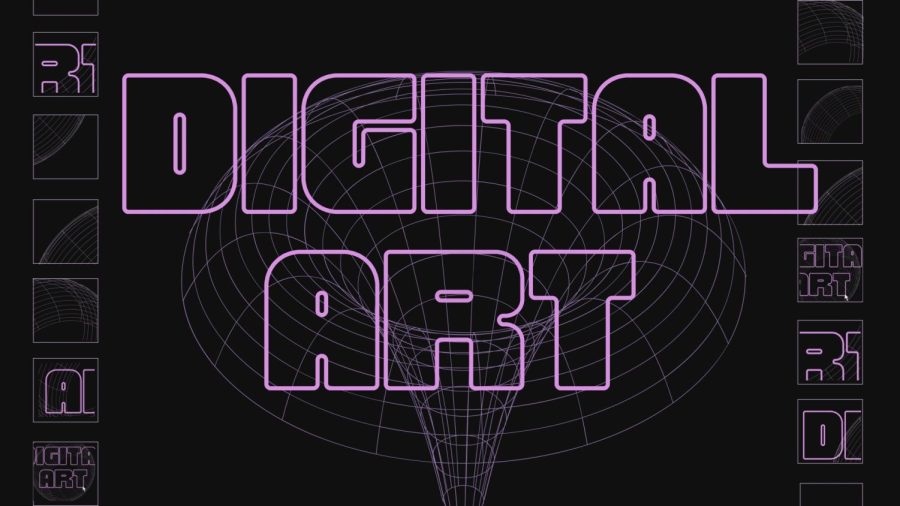Creating art in a digital age
April 12, 2022
Just like traditional art forms, digital art provides new techniques for people to express themselves in creative ways.

The parity between real world and digital world seems to be getting more and more apparent everyday. Nowadays, such a fine line exists separating what can be done manually, and what could be done with technology in just a fraction of the time. Methods of creative liberty are no exception. In the midst of a modernizing world, conventional art has also been warped into digital form. Digital art has been stirring up loads of controversy–but first, what is digital art? Animations, photo illustrations, or digital painting created via technology falls into the category of digital art. Debates in the media speak on the validity of digital art being classified as “art.” Turning to our dear friend Miriam Webster, art is defined as something that is created with imagination or skill and that is beautiful or expresses important ideas or feelings. The key to this debate revolves around the one word in this definition—created. What constitutes something as being created? Does a creation have to be something made physically, with tangible results? Or does a creation just mean something that was produced by someone with some platform? These questions have led to a divide in the public’s views on digital art. While some consider it to be expressive and magnificent, others say it is not real art. Despite arguments being made on both sides, the process behind creating a piece of well-thought out digital art is very time-consuming. With just two materials– a device with some digital software/platform, and a drawing tool– creating digital art can take around 40 hours on average (according to the American Job Center).
Digital art is more than simple doodles on a screen, from precision in typography to understanding color theorem, there are lots of moving components of a drawing. Digital art is the future of art, appearing in children book illustrations, product advertisements, and throughout television and film productions. These graphic renditions of lines and shapes are often transformed into moving animations or logos. Digital art truly kickstarted after 1960 when museums started incorporating graphic work into their exhibits. One of the first ever graphic design pieces was created by Kenneth Knowlton called Computer Nude (Studies in Perception l). The art featured a naked woman covered in pixels, creatively covering her body parts with distorted art.
